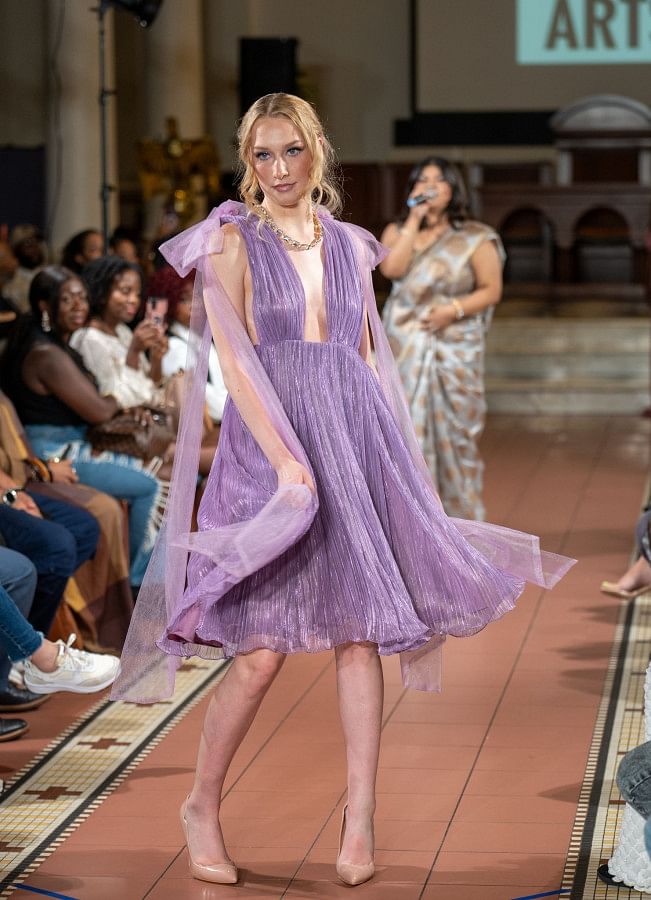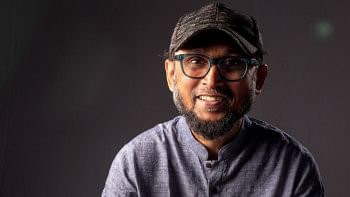Rooted in tradition, styled for the world

For decades, Bangladeshi fashion has grappled with an unspoken dilemma — how does one balance global aspirations with cultural heritage? The answer, for many, seemed to lean toward western influences, often at the expense of traditional styles.
It wasn't just a matter of preference; it was a subconscious shift, a belief that international fashion platforms had little space for the richness of Bangladeshi design. But in recent years, a quiet yet powerful movement has begun, where designers are reclaiming their heritage, proving that tradition and innovation can coexist beautifully on the world stage.
Our fashion industry has long admired the global stage from a distance, rarely considering itself a part of it. The assumption was that high fashion meant sleek minimalism, sharp tailoring, and silhouettes that spoke the language of Paris and Milan. But now, that tide is turning.

A shift rooted in representation
Much of this change can be credited to how the global entertainment industry has embraced heritage fashion. "A lot of it has to do with film and music," notes Raisa Rafique, a young designer who achieved the milestone of representing Bangladesh at the New York Fashion Week. "Recently, many actors and actresses are proudly wearing traditional clothes to big, international events, reminding people how graceful our tradition is."
For Raisa, this journey of embracing Bangladeshi heritage in fashion was deeply personal. "The farther you are from home, the closer you grow to your roots," she says. "We feel homesick. We want to get close to home with food, clothes, and everything else." This sentiment resonates with many in the diaspora who find comfort in their culture, leading to a renewed appreciation for traditional attire.

Breaking the mental barriers
One of the biggest hurdles Bangladeshi fashion has faced is not a lack of talent, but a limited global perspective. For years, designers primarily focused on establishing themselves within the national market because the industry itself reinforced the belief that there was little space for Bangladeshi fashion on international platforms.
With Bangladeshi designers stepping onto international platforms, the perception of the country's fashion industry is beginning to shift. These collections often reflect a blend of personal identity and cultural heritage, proving that tradition can coexist with modernity. While there is always room for growth, the overwhelmingly positive response from international audiences reaffirms that Bangladeshi fashion has a well-deserved place on the global stage.
This experience is proof that the world is ready to embrace Bangladeshi fashion. The question is — are we ready to claim our place?
Balancing tradition with modernity
One of the key challenges for designers in this movement is striking a balance between heritage and contemporary appeal. "Western wear focuses more on simplicity, but tradition is all about grandeur," explains Raisa, "Blending these two is definitely a challenge." The key, as seen in many emerging collections, is in the details — reviving handwoven textiles, incorporating traditional embroidery, and using motifs that tell a story, all while maintaining silhouettes that feel modern and wearable.
As Bangladeshi designers reconnect with their heritage, they are reshaping the definition of contemporary fashion. Rather than sidelining tradition in pursuit of global appeal, they are finding innovative ways to present it with a modern touch.
Fashion today transcends borders, and Bangladeshi designers are proving that cultural identity is not a constraint but a powerful asset. By bringing their heritage to the international stage, they are carving out a well-earned space in the global industry. This is just the beginning, but the direction is clear — Bangladeshi fashion is poised to make a lasting impact worldwide.

 For all latest news, follow The Daily Star's Google News channel.
For all latest news, follow The Daily Star's Google News channel. 








Comments